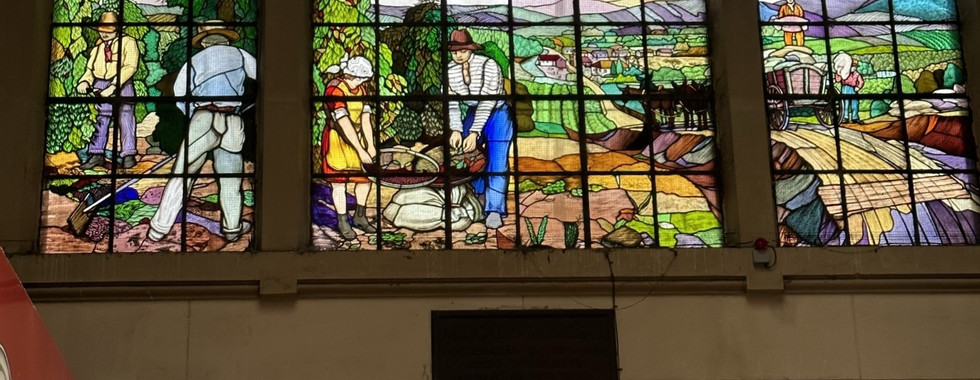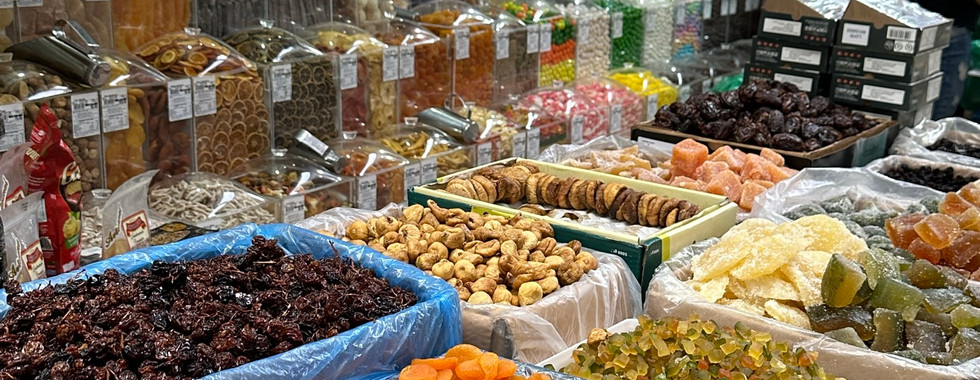Insider's Guide to Mercado Municipal de São Paulo: Navigating the Iconic Market in Brazil
São Paulo, Brazil ✈

While travelling in Brazil, I visited the Mercado Municipal de São Paulo, or Mercadão, as it's known locally. This bustling market, which opened in 1933, is located at Rua da Cantareira 306 in the central zone of São Paulo. Despite its location in a less upscale part of the city, common sense precautions like staying alert and watching your belongings make it a safe spot for tourists and locals alike.
Book a Tour: Private Tour of São Paulo
“The Mercado Municipal de São Paulo is a functional and historical marketplace that offers visitors a glimpse into the local culture and cuisine.”
The building itself is notable for its historical architecture. Designed by the office of Francisco Ramos de Azevedo, it shares its aesthetic roots with the city’s Teatro Municipal. One of the market's most striking features is its stained-glass windows. These 72 panels, crafted by Russian artist Conrado Sorgenicht Filho, showcase the agricultural diversity of São Paulo State.
Within the market, you can find over 283 stalls operated by around 1,500 employees. The variety of goods on sale is impressive. Vendors offer local and exotic fruits, various cuts of meats, a selection of cheeses, spices, nuts, and sweets. Dried and salted cod, known as bacalhau, is a specialty here, and there's no shortage of olives and grains.
For foodies, the market is well-known for two items: the mortadella sandwich and the pastel de bacalhau. The sandwich is generous in size, filled with layers of mortadella sausage, while the pastel de bacalhau is a deep-fried pastry filled with salted cod.
The market is not just a shopping venue but a social hub where locals, chefs, and restaurant owners come to source fresh ingredients and specialty items. It's an integral part of the community where people come together over food.
Guide to the Market
Cultural Significance: The market is not just a hub for buying and selling goods; it also serves as a cultural landmark for the city. It's a place where the traditional and modern meet — from the local families that have been shopping there for generations to the young chefs seeking out new flavors and inspirations.
Architectural Details: The Mercado's architecture is a blend of neoclassical and art nouveau styles, with a facade that includes elements typical of the period, such as the domes and the intricate designs on the windows and skylights. The main entrance is particularly grand, inviting visitors to step into a world that feels both historic and alive.
Fruits and Delicacies: Among the exotic fruits, you will come across jabuticaba, caju (cashew fruit), and various types of guava. Also, the market is a haven for food connoisseurs looking for rare ingredients and traditional Brazilian delicacies. It's a place to discover new flavors or perhaps sample something you wouldn't find easily elsewhere.
Artisanal Products: Beyond the food, the Mercado Municipal also offers a range of artisanal products. This can include everything from handmade crafts to traditional Brazilian candies and spirits, providing a full sensory shopping experience.
Events and Festivities: The market often hosts events and festivals that celebrate Brazilian culture and cuisine. It's worth checking the local calendar to see if any special events coincide with a visit.
Dining Options: While the market is renowned for its food stalls and traditional snacks, there are also several sit-down restaurants within the market that offer a more leisurely dining experience. These restaurants typically serve a variety of local dishes and offer the opportunity to relax and soak in the atmosphere of the market.
Guided Tours: For those interested in learning more about the market and its history, guided tours can be arranged. These tours offer an educational insight into the significance of the market's goods and can often provide a behind-the-scenes look at some of the vendors' operations.
Accessibility and Hours: The market is open daily, including weekends, but operating hours for different stalls and shops may vary, so it's recommended to check in advance if you're looking for something specific. The market is also accessible by São Paulo's public transport, with several bus lines and a nearby metro station.
The Mercado Municipal de São Paulo is a functional and historical marketplace that offers visitors a glimpse into the local culture and cuisine. It's a straightforward place to enjoy good food, purchase a wide array of produce, and experience the local way of life safely and enjoyably.
Book a Tour: Private Tour of São Paulo

































Comments